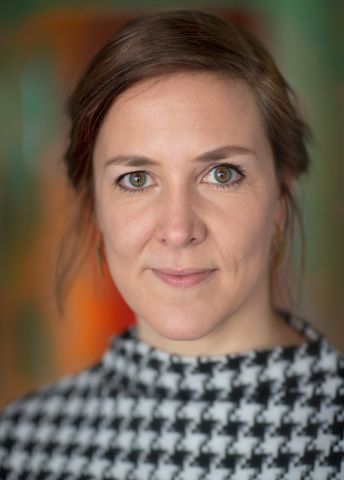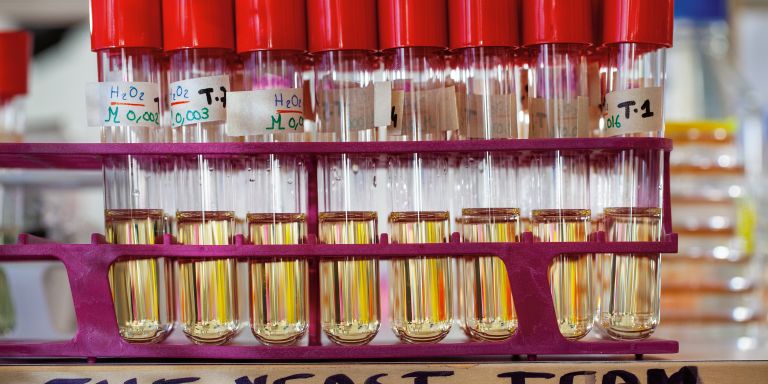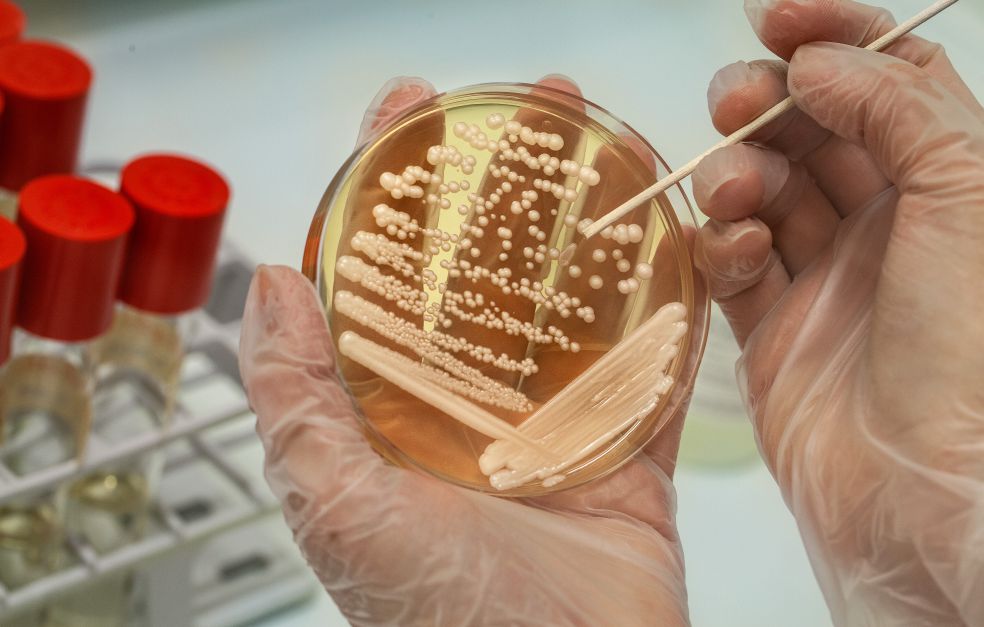Yeast is good for much more than baking bread and brewing beer. In Rike Stelkens’ lab, yeast is serving as a model system used to study hybridization – a form of genetic exchange between species. Her findings may add to our knowledge of how species evolve, and how groups of animals and plants can be saved from the effects of climate change. The results may also benefit research on agricultural breeding and infectious disease.
Rike Stelkens
PhD Evolutionary Biology
Wallenberg Academy Fellow, Prolongation grant 2024
Institution:
Stockholm University
Research field:
Evolutionary biology, focusing on yeast genetics, hybridization and environmental change
“Thirty degrees Celsius is about the optimum growing temperature,” Stelkens says, holding up a culture tube in the Zoological Department lab at Stockholm University.
The tube contains yeast growing in a liquid nutrient. Stelkens replaces it in the growth chamber, where the temperature is regulated and the tubes are agitated to give the yeast oxygen.
For thousands of years people have used yeast to bake bread and produce wine or beer – but not in this lab. Here, yeast is a model system for studying hybridization.
Hybrids can produce winning characteristics
Hybridization occurs when two individuals that are genetically different mate and reproduce. The individuals may belong to different species or different populations. The resulting offspring is called a hybrid. For instance, when a mare and a jack (male) donkey mate, they produce a hybrid called a mule.
Since genes from different species rarely make a perfect match, hybrids are often sterile, and less likely to survive than their parents. But not always. Some hybrids are viable and acquire favorable characteristics.
“On the one hand hybridization is potentially harmful – it can cause a population to go extinct. On the other, it can create successful individuals with new features, which can help populations adapt. This is an evolutionary paradox that I find truly fascinating.”
Stelkens is studying how hybridization can contribute to survival under difficult conditions. The environment is rapidly changing, and animal and plant species must evolve to survive. The genetic diversity of a population is crucial to its ability to adapt to new or stressful conditions. The potential benefits of hybridization stem from that diversity.
In just a single generation, hybridization completely reshuffles the genome and produces new genetic combinations. This may be just what is needed to develop characteristics necessary for survival in new surroundings.
Evolution on a lab bench
Stelkens’ research team is using yeast to test the environmental conditions under which hybridization can be good for a population.
There are several reasons why yeast is being used. Structurally, yeast resembles other animals and plants. But it is single-celled, i.e. less complex, it is easy to culture and fast-growing. Yeast can be frozen down and revived, and last but not least, it can reproduce sexually.
“This means we can study evolutionary changes caused by hybridization in real time, essentially during the time a PhD student spends in the lab.”
The researchers let yeast grow in separate environments for several hundred generations so that, over time, they evolve and adapt to the environment around them. They then allow populations to hybridize with each other, after which the hybrids and their parents are exposed to various kinds of environmental stress.
The aim is to see whether the genetic diversity resulting from hybridization helps the yeast to survive in its new surroundings. The team is sequencing the genomes of the populations to study how the DNA is admixed in the offspring, and what makes some hybrids more successful than others in stressful environments.
“I hope that my research will lead to a better understanding of the importance of hybridization in the creation of species – providing answers about how new species evolve, and how they remain distinct from each other.”
“The grant is hugely important. I can buy equipment that is essential to my research, and recruit talented researchers. We can also commit to new, intriguing areas of research on hybridization and environmental changes.”
Saving endangered species
The idea is to use findings from the yeast experiments to draw conclusions about hybridization in other species. The results could be used to conserve a population under threat from climate change, for example.
“We may be able to say to what extent the population can be mixed with another to save it from extinction, without losing the unique character of the population.”
This knowledge may also be of benefit in agricultural breeding as a means of predicting the results of cross-breeding, or in the research on infectious disease, given that several pathogenic organisms have been found to result from hybridization.
Happy in Sweden
Stelkens was interested in plants and animals from an early age. She grew up in Germany in a house in the country with a large garden and animals around her. She was in her teens when she decided to become a biologist.
During her degree studies she developed an interest in evolution, so she took up a position at a laboratory in the U.K. studying evolution in African cichlid fish. She then moved to Switzerland to complete her PhD studies, and also worked as a postdoc there.
At a conference she was advised to transfer her research to yeast. Attracted by the idea of no longer having to clean aquaria, and the chance to work with a faster-growing model system, she followed the advice. She moved to Liverpool to start her yeast research, which she continued as a postdoc at the Max-Planck Institute for Evolutionary Biology in Germany.
In 2017 Stelkens joined Stockholm University and moved with her family to Sweden. She now leads a team of eight fellow researchers and is very happy here.
“There is a much less obvious hierarchy here. I have never been treated as equally as in Sweden. It’s really liberating.”
Text Sara Nilsson
Translation Maxwell Arding
Photo Magnus Bergström






